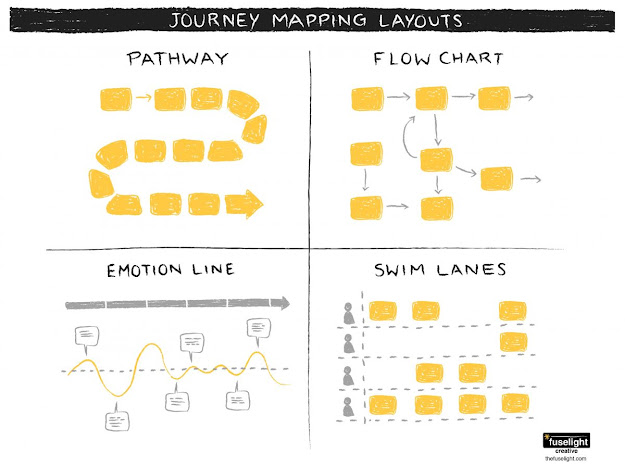Maps (Part 1): Metaphors
MAPS of Life puns on the acronym with the concept of “maps” in its actual and metaphoric use. I will explore the metaphor, analogy, parable and symbol of “maps” as the word relates to life.
Maps are representations of geographically based information. Its purpose is to provide directions and guidance using a simplified reality. Therefore, using map as a metaphor of direction and guidance for our lives is not surprising. A life map can show a person how to live (what paths to take) and what should be or is the telos (end or purpose) and destination of that life.
Life as a journey is also a natural metaphor. A better one, I feel however, is that life is a pilgrimage. Unlike a tourist or traveller on a non-specific journey, a pilgrim has defining characteristics. Typically, a pilgrim leaves the comfort and certainty of home to a faraway designated place of spiritual significance. The purpose is not simply to satisfy curiosity or intellect through new experiences or knowledge. Rather, the experience is to transform the pilgrim into spiritual maturity. Even if a literal physical pilgrimage does not occur for most people, framing one’s life as a spiritual pilgrimage is helpful to gain the fruit of wisdom. A map as the guide in that journey or pilgrimage is an important associated metaphor.
In the western Judeo-Christian world, the archetypical pilgrim is Christian, the protagonist in Paul Bunyan’s allegorical book Pilgrim’s Progress. Second only to the Bible in popularity for most of its history, Pilgrim’s Progress describes Christian leaving the City of Destruction as he progresses toward salvation. He encounters helpers and hinderers along the way before and after meeting the Trinitarian God at the Cross, where Christian receives a scroll as a symbol of salvation. Still, many further trials and temptations await Christian, until he finally crosses the river of death to be welcomed into the Celestial City.

Bunyan’s intention is to encourage and exhort readers to embark on their own pilgrimage of salvation. His map, therefore, is both illustrative and instructive for the readers’ lives. In the map are characters and objects that Christian encountered, the correct roads and destructive detours of his travels, and the metaphorically morally significant topographical and geographic relationships in this allegorical journey. “Narrow is the road that leads to life.” (Matt 7:13-14) In Bunyan’s map, the roads are strait (that has additional meaning of “narrow.”)
Not all cartographic metaphors are this straight-forward. Mapping can also be a metaphor for a process of exploration rather than a linear life journey. In his book Farsighted, Steven Johnson describes a strategy to improve decision making in complex situations, whether by an individual or in a group. His three steps are a) mapping of variables to formulate potential paths to the goal, b) making predictions of reasons and likelihoods for success of the paths, and d) choosing the path(s) to proceed. Johnson’s “mapping” seeks diversity to find divergent alternatives. Examples include blocking existing perspectives intentionally to encourage new ones, embracing “constructive extremism” such as having a “misfit” in the group who thinks very differently, and working backwards from downstream to derive new paths. This last one is similar to Edward de Bono’s illustration of lateral thinking: an unknown path widens like a funnel from the current position of point A to point B downstream. While difficult to find the entrance of the path from A, it is easier when working backwards from the wide end of B back to A.
Another metaphoric map is Lifemapping, written by John Trent. On a map using a time-line, past memorable experiences are separated into different categories. Examples of these are people and places, education and careers, failures and successes, and spiritual or religious experiences. The mapper is to then ask how and which of these contributed to form his or her deepest values and convictions. Thereafter, these beliefs can be strung like pearls in a necklace as a story of faith to share with others.
Over the past decade, many companies and health organizations have used “journey mapping” as a method to identify how and where a client or patient’s experience with the host can be improved. Patient journey mapping, or healthcare process mapping, uses a narrative of the interviewee’s end-to-end experiences in various formats to identify problem areas or to celebrate successes.
In using “map” as a metaphor for the guide to life, or as a road-map to offer directions or paths on which to travel in a life journey or pilgrimage, some of the ideas warrant the wider scope of “analogy.” To that I will turn next, comparing maps with our minds as in mind-mapping, or with areas of knowledge represented by maps of fields and territories, and finally, maps as analogues of the earth.
***
References:
https://thefuselight.com/patient-journey-mapping-tips-for-creating-a-safe-space/
Mapping the Patient Journey: a Case Study
Mapping the Patient Journey: a Case Study





0 comments